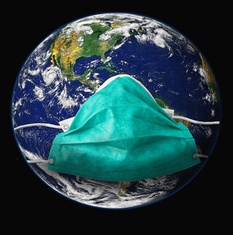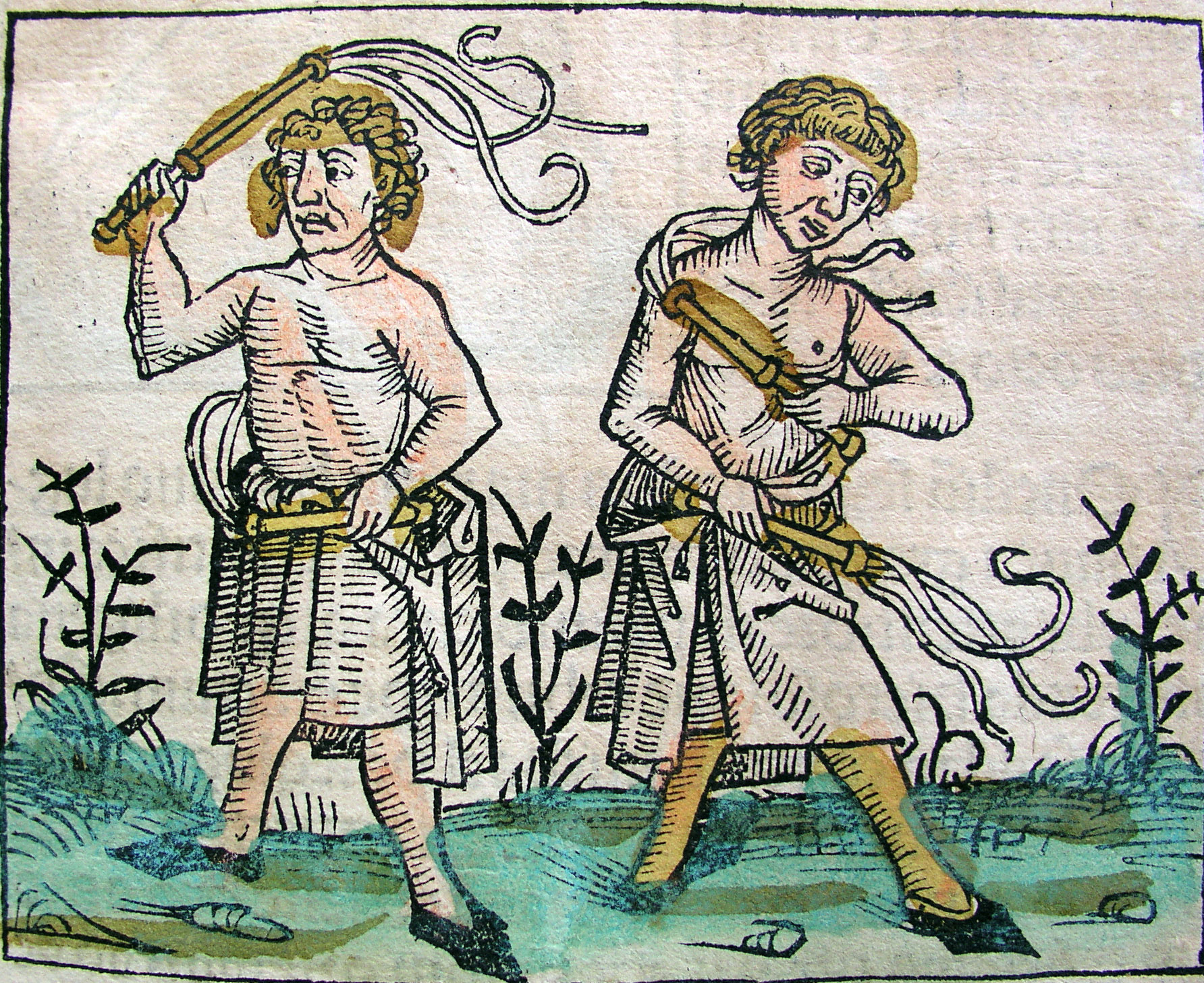
Important lessons from previous pandemics.
First published: Sunday January 31st, 2021
Report this blog
Numerous infectious diseases are deadly, some are particularly gruesome, and some are all of the above, having killed tens, even hundreds of millions of people. No diseases are nice, but these are some of the very worst.
THIS POST MAY BE UPSETTING TO SOME READERS
Plague-




Many diseases terrorised Asia and Europe for millennia from pre-Roman times through the Medieval period, but one which was feared more than any other was the plague.
Plague has different forms with different symptoms, all of them ghastly. It most notoriously causes painful buboes, swellings of the lymph nodes, to form on the inner thighs, armpits and neck.
Plague is believed to have been present in Europe for thousands of years, but the first recorded pandemic of plague broke out in 541AD, and is known as the Plague of Justinian. At its height the plague killed several thousand every day. The disease itself killed many people, but as it killed so many farmers, it indirectly caused a famine which resulted in even more deaths. The plague seemed to manifest cyclically, appearing to spike every 12 years for the next 200 years, during which it is estimated to have killed up to as many as 100 million people. Then it seemed to vanish for 500 years.
But then in the 14th century it returned with a vengeance, and caused the deadliest pandemic ever recorded, which is known as the Black Death.
The Black Death is believed to have originated in a lake in central Asia, and broke out in 1338. It very quickly spread across Asia, within a mere 8 years it had reached Crimea. From there sea traders brought it to the major ports of Europe, where it then began to proliferate exponentially. Within a decade it had spread across much of Europe.
Some towns and villages across Europe had their populations reduced by up to 80%. And, as in the case of the plague of Justinian before it, the social and economic effects of the Black Death’s death toll were catastrophic. By the end of the 14th century the population of Europe had been halved, numerous communities of metal miners and farm workers had been all but wiped out. Clergymen and monasteries were also devastated by Black Death, and along with their decline went both the biggest source of care and treatment for laypeople, and, just as crucially, the foremost supply of chroniclers and record keepers.
Life was hard enough in Medieval times due to civil war and bad weather affecting crop failures, but even as bad as things were to begin with, the devastation of Black Death caused people to literally believe that the world was ending. People of many different religions thought that Black Death was a divine punishment, a sign of God's displeasure at the human race's inherent sinfulness. Religious fanatics, Flagellants, would try to atone for their supposed sinfulness with their own self inflicted punishments, including marching in large groups through towns and lashing themselves with whips. But of course it did nothing to stop the disease.
Treatments were equally ineffective, if a member of your family had plague, you'd likely all be barricaded in your home together until you either recovered, or, more likely, died. In the 17th century, the first Plague Doctors appeared. They were essentially quacks who used methods like bloodletting as treatment, which not only didn't help but caused more harm to the patient than good.
The Black Death peaked in cycles for several hundred years, and in total it is believed to have killed between 75-200 million people across Eurasia, making it the most fatal pandemic ever recorded, and one of the deadliest forces that humanity has ever encountered.
Some facts about plague:
Cholera-




Cholera is a very unpleasant disease. The diarrhoea and vomiting it causes leads to dehydration, which in turn causes other unpleasant symptoms including confusion, shock, lethargy, and saggy blueish skin. Children are particularly vulnerable to having seizures and going into comas. If treated quickly it has a death rate of less than 1%. If left untreated, around 50% of cases result in death.
For a long time it was prevalent in India, but within the last few hundred years it spread to other parts of the world. It became a notorious hallmark of Victorian Britain, a common killer in the slums of London. In reality it affected rural areas as much as big cities, but it was in London that some crucial discoveries about cholera were made.
Similarly in the case of plague, people's ignorance of disease led them to believe spurious ideas of how disease was caused and spread, such as believing it was caused by 'dirty air'. But in the 19th century many important breakthroughs greatly advanced our understanding of infectious diseases and our ability to deal with them. Cholera was a major one.
In the 19th century cholera killed tens of millions of people, and in the mid 1800s cholera was a serious problem in London alone. A man named John Snow worked out that cholera actually came from polluted water, not air. This simple but pivotal discovery triggered immense advancements and improvements in irrigation and sanitation systems in London and elsewhere, which in turn reduces risk of transmission of cholera and other diseases like E. coli.
Nowadays cholera is very rare in countries with good irrigation/sanitation systems, but is still quite common in the developing world. Though we know how it spreads, it is difficult to pinpoint exactly what causes sudden outbreaks of it.
Some facts about cholera:
Smallpox-




Smallpox was a truly horrific disease, one of the very worst that humanity has ever battled.
Its symptoms are hideous, its death toll was immense, its legacy is horrifying. Over the centuries it has slain millions, from ordinary folk to kings and queens. Smallpox was depicted in ancient Egyptian hieroglyphs. Numerous peoples observed deities to smallpox - such as the Hindu goddess Shitala Devi. In the final 100 years of its existence it killed up to 500 million people.
Smallpox was so awful that nations from opposing sides of the Cold War would come together to fight against this common enemy, and, incredibly, would defeat it.
The reason I say smallpox was an horrific disease is because it has been wiped out, thanks to the miracle of vaccinations, and the remarkable efforts of the World Health Organisation. But before then, smallpox was an ever present menace throughout most of the world.
Smallpox wielded the deadly combination of being both highly virulent, and being able to spread very easily. Records from as far back as 3,000 years ago reference smallpox-like diseases. As with other diseases, people's understanding of the causes and transmission of smallpox was very primitive for a long time, as were their methods of treatment. But smallpox did engender the first known cases of inoculation.
Inoculation is the introduction of a small amount of a disease to the body, in order to trigger an immune response. There is evidence that Smallpox inoculation took place in China as early as the 10th century. You could either have the pus from a Smallpox pustule rubbed into a scratch made between your thumb and forefinger, or you could snort it.
In the 1700s, a British woman named Mary Montagu learnt about inoculation when she visited the Ottoman Empire, where her husband was an ambassador. Having survived Smallpox herself, and having lost her brother to it, she was spurred to introduce inoculation to Britain. It was tested on six prisoners sentenced to be hanged, in exchange for their freedom if they survived. They did, and so many people inoculated themselves.
Then along came Edward Jenner, who created the first ever vaccination, a safer and more robust form of inoculation in 1798. Its success led to a decline in cases, and made smallpox inoculation obsolete. It would also inspire effective vaccinations for many other diseases.
In the early 20th century, smallpox had been all but eradicated in the developed world, before it was decided that the foul disease should be wiped out globally. Led by the World Health Organisation, a team of devoted heroes led a colossal project to eradicate Smallpox in the developing world, where it was still quite rampant. This was mostly through the 1970s. For all the destruction smallpox had caused, it also remarkably served as a common enemy which united nations on either side of the Iron Curtain.
Then in 1980 Smallpox was declared officially eradicated. In many ways this feat was one of humanity's greatest triumphs. The tremendous efforts of the Smallpox Eradication Program can never be understated, and should never be taken for granted or forgotten.
Some facts about smallpox:
Influenza-



Influenza (flu for short) is a disease most people have heard of. There are actually many different kinds of flu virus; such as Swine Flu and Bird Flu.
While some diseases generally stay at low levels and cause large-scale fatalities over long periods, and others appear suddenly and cause many deaths in a short space of time, influenza is known to do both, as there are different strains. The WHO estimates that up to 650,000 people die every year worldwide due to flu. But of course flu can also cause sharp spikes in fatalities in the form of pandemics, such as the Spanish Flu pandemic.
"I had a little bird,
her name was Enza,
I opened the window,
and in flew Enza"
There have been five flu epidemics/pandemics in the last 100 years, the Spanish Flu was the first one. It began in 1918 during World War One. It lasted almost exactly two years, and in that time killed more people than World War One itself; up to as many as 50 million people, killing more people than plague at the height of the Black Death.
Many people think flu is just a worse form of the common cold, as they can have similar symptoms. But the two diseases are caused by different viruses.
While the eradication of smallpox was incredibly successful, influenza is a different story. Smallpox has a very slow mutation rate, making it easy to immunise against. But influenza has a very fast mutation rate, making it virtually impossible to immunise permanently against.
Some facts about influenza:
HIV-



We are currently going through, not one, but two pandemics; the Covid-19 pandemic, and the HIV/AIDS pandemic. Like the other viruses listed here, HIV is a highly virulent and deadly disease. Unlike the other viruses, HIV hasn't been around for centuries, but seemed to suddenly appear in 1981 and rapidly spread across the globe.
HIV does not directly kill humans, but attacks the immune system and causes Acquired Immune Deficiency Syndrome or AIDS, leaving people vulnerable to other diseases.
Although HIV and AIDS weren't officially identified/named until 1981, there are a few records of cases where people had symptoms that suggest they may have had HIV/AIDS as early as the 1920s, mostly in central Africa.
The broad consensus is that the HIV derived from SIV, or Simian Immunodeficiency Virus, which affects apes including chimpanzees, and, as is the case with several other diseases, the virus 'jumped the species barrier', suggesting humans became susceptible to SIV through consuming chimpanzee flesh. When viruses transfer from animals to humans this is called zoonosis. It is believed that HIV first developed this way sometime in the 19th or early 20th century.
Even in the short time HIV has existed, it has led to the deaths of millions. Due to its very fast mutation rate it is impossible to immunise against. Left untreated it can drastically shorten lifespan. However, treatments have already advanced to the point where the rate of progression of HIV to AIDS is drastically dropping in many parts of the world, and HIV positive people are able to live long and healthy lives.
Some facts about HIV:
Covid-19-



Covid-19 is the virus which is causing the pandemic we are currently experiencing. It is a type of coronavirus, a family of viruses which includes SARS and MERS, diseases which have caused nasty epidemics in recent years. Due to its combination of high virulence and spreadability, it has created the largest-scale pandemic since the Spanish Flu 100 years ago.
One positive that can be derived from this pandemic is that has brought much needed light to the issue of intensive farming and animal agriculture. Avian flu, swine flu, MERS, SARS, BSE, Covid-19 and others are all strongly believed to have originated from animals kept in filthy, cramped conditions. In the case of Covid-19 it is postulated to have originated in bats or pangolins.
Covid-19 is ongoing, the true extent of the damage it will ultimately cause remains to be seen. But remember that we have overcome other terrible diseases before, and this pandemic will come to an end eventually. Keep looking forward to happier times ahead.
In the mean time, keeping healthy is good for your immunity, so eat plenty of fruit, and exercise is also important. Keeping your mind healthy is also important for your well being, so read lots of blogs and take plenty of quizzes. Here is one on myths about disease.
IMPORTANT:
This pandemic has caused a lot of suffering, and has worsened an already bad situation for many people. In particular many face isolation, loneliness, and heightened anxiety. Websites like Jetpunk can be a lifeline. They offer stimulation as well as some degree of social interaction.
Please, no matter who you talk to or what you have to say, always be kind. You never know what situation someone is in. A little kindness can make someone's day, or at least does no harm to them.
